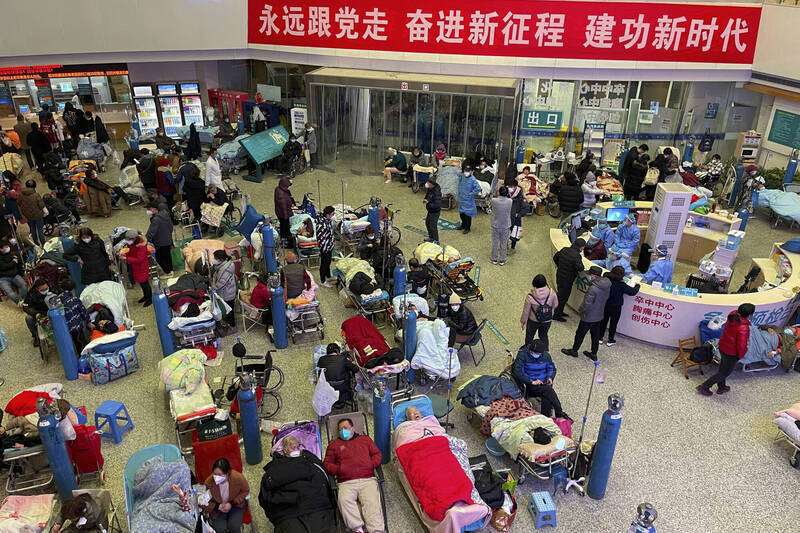The National School of Development at Peking University estimates based on big data models that on December 20 last year, the COVID-19 epidemic in many places in China reached its peak.
As of January 11 this year, the cumulative national infection rate was about 64%, and about 900 million people had been infected.
schematic diagram.
(Associated Press)
[Central News Agency] The National School of Development of Peking University estimates based on big data models that on December 20 last year, the COVID-19 epidemic in many places in China reached its peak.
As of January 11 this year, the cumulative national infection rate was about 64%, and about 900 million people had been infected.
Lu Media Economic Observation Network reported on the 13th that a research group composed of Ma Jingjing, an associate professor at the National School of Development of Peking University, and others recently released an epidemic infection report, analyzing the transmission characteristics of this round of epidemic, the symptoms of people infected, and the differences between groups and regions. Wait.
Please read on...
The report pointed out that about 13 days after the launch of the "New 10 Measures", that is, on December 20 last year, the epidemic situation in many places in China reached its peak, and by the end of December, the infections in various places had passed the peak.
As of January 11 this year, the cumulative national infection rate was about 64%, and the cumulative number of infected people was about 900 million.
On the Internet, the epidemic situation in Beijing, Shanghai, and Guangzhou appears to be very large, but the research team of the National Institute of Development of Peking University estimates based on data that the infection rate in the western region may be higher.
The report estimates that the top three provinces with the highest cumulative infection rates in this round all belong to the western region. The first is Gansu Province with about 91%, the second is Yunnan Province with about 84%, and the third is Qinghai Province with about 80%.
Ma Jingjing said that the infection rate in the report is estimated by the model and calculated based on the search volume for post-infection related symptoms on online platforms.
For example, the number of online searches for symptoms such as "fever" and "cough" has increased, which means that the infection rate has increased.
On the basis of these data, members then calculate the infection rate of the whole country, each province, and each city.
She said that although such methods will be affected by some random factors or inherent habits that affect the search, there is a certain gap with reality, but during the outbreak, it is helpful to quickly and comprehensively understand the approximate infection rate across the country and deploy medical resources to relevant departments. important role.
In addition, during the peak period of the epidemic, the research team also conducted questionnaire surveys throughout China, collecting a total of 11,443 valid samples.
The survey found that most of the infected people interviewed had one or more symptoms such as fever, cough and sputum, nasal congestion, runny nose, sore throat, altered sense of taste and smell, and diarrhea.
The most common symptom after infection is fever, which lasts for 3 days or more in 46%.
About half of the infected people disappeared and turned negative 5 to 7 days after infection, and about 20% of the infected people took longer.
The survey also found that in terms of subjective feelings, 76% of the infected people interviewed believed that the degree of discomfort after infection with COVID-19 was more uncomfortable than the worst flu or cold they had previously contracted.
Related news please see:
Please click here for the "Wuhan Pneumonia Zone", for more information, you can grasp it first-hand.
